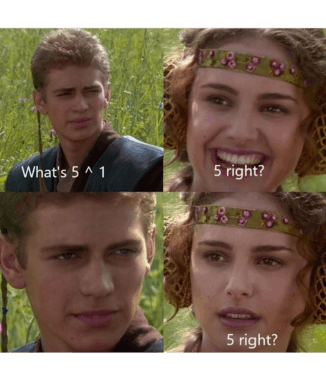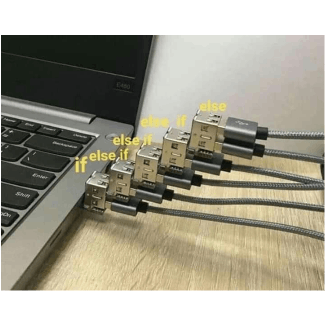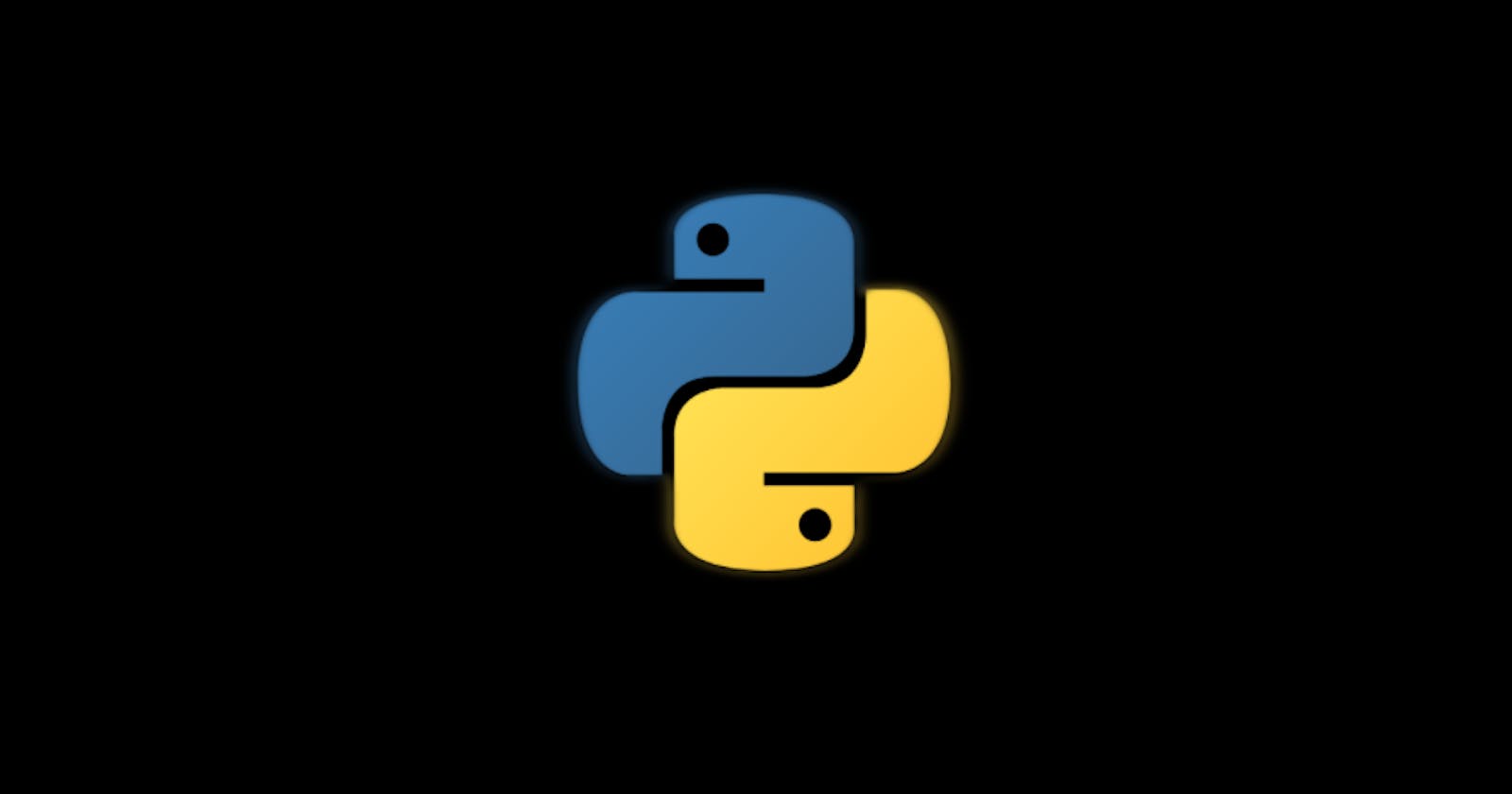Get started
Python is a powerful, versatile programming language that is widely used for web development, data analysis, artificial intelligence, and more. It's known for its simple and easy-to-learn syntax, making it a great choice for beginners.
Here are a few basic examples to help you get started with Python programming.
To run the code, type
python <filename.py>in the shell.
Hello, World!
One way to get started with any programming language is by printing Hello, World! So let's print it out!
# Program to print Hello, World!
print("Hello, World!")
Hello, World!
The above code is pretty self-explanatory. We use the built-in print() function to print the string Hello, World!.
string - A string is a data structure in Python that represents a sequence of characters
Arithmetic Operations
There are seven arithmetic operators in Python:
Addition (+)
Subtraction (-)
Multiplication (*)
Division (/)
Floor division (//)
Modulus (%)
Exponentiation (**)
# Program to perform arithmetic operations
num1 = 15
num2 = 3
print("The sum of {0} and {1} is: {2}".format(num1, num2, num1 + num2))
print("The difference of {0} and {1} is: {2}".format(num1, num2, num1 - num2))
print("The multiplication of {0} and {1} is: {2}".format(
num1, num2, num1 * num2))
print("The division(float) of {0} and {1} is: {2}".format(num1, num2, num1 / num2))
print("The division(floor) of {0} and {1} is: {2}".format(
num1, num2, num1 // num2))
print("The modulus of {0} and {1} is: {2}".format(num1, num2, num1 % num2))
print("The value of {0} to the power {1} is: {2}".format(
num1, num2, num1**num2))
The sum of 15 and 3 is: 18
The difference of 15 and 3 is: 12
The multiplication of 15 and 3 is: 45
The division(float) of 15 and 3 is: 5.0
The division(floor) of 15 and 3 is: 5
The modulus of 15 and 3 is: 0
The value of 15 to the power 3 is: 3375
We can observe from the above code that the output statement is in the format of str.format(*args, **kwargs). format() the method can be invoked on a string that contains literal text or replacement fields separated by brackets {}. Either the name of a keyword argument or the positional argument's numerical index is present in each replacement field. It returns a copy of the string with the string value of the relevant argument in place of each replacement field.
The index or base index starts with 0. Why not 1? Because 0-based indexing simplifies the implementation of algorithms and makes the code more efficient by allowing for direct translation between the index of an item and its memory address, it makes it easier to implement algorithms that work with ranges of items in an array.
Swapping
Swapping can be done in multiple ways. Let's swap two values in different methods.
#1 - Temporary variable
a = 999
b = 111
print("The value of a and b before swapping is {0} and {1}".format(a, b))
temp = a
a = b
b = temp
print("The value of a and b after swapping is {0} and {1}".format(a, b))
The value of a and b before swapping is 999 and 111
The value of a and b after swapping is 111 and 999
We assign the value of a to a temporary variable called temp. Then assign the value of b to a and then temp to b to swap the values.
#2 Without temporary variable - 1
a = 999
b = 111
print("The value of a and b before swapping is {0} and {1}".format(a, b))
a = a + b
b = a - b
a = a - b
print("The value of a and b after swapping is {0} and {1}".format(a, b))
The value of a and b before swapping is 999 and 111
The value of a and b after swapping is 111 and 999
#2 Without temporary variable - 2
why not just swap it in one line?
a = 999
b = 111
print("The value of a and b before swapping is {0} and {1}".format(a, b))
a, b = b, a
print("The value of a and b after swapping is {0} and {1}".format(a, b))
The value of a and b before swapping is 999 and 111
The value of a and b after swapping is 111 and 999
The expression a, b = b, a is a shorthand way to swap the values of two variables in a single line of code. The expression b, a creates a tuple containing the values of b and a in that order. Then, the tuple is unpacked on the left-hand side of the assignment statement, with variable a getting the value that was in b, and variable b getting the value that was in a.
#2 Without temporary variable - 3
Here's another method to swap by using the XOR operator.
a = 999
b = 111
print("The value of a and b before swapping is {0} and {1}".format(a, b))
a = a ^ b
b = a ^ b
a = a ^ b
print("The value of a and b after swapping is {0} and {1}".format(a, b))
The value of a and b before swapping is 999 and 111
The value of a and b after swapping is 111 and 999
Suggested reading -Bitwise Operators in Python
The ^ operator is used to perform the bitwise Exclusive OR (XOR) operation. The XOR operation compares each bit of the first operand to the corresponding bit of the second operand. If the bits are the same, it returns a 0 in that position. If the bits are different, it returns a 1 in that position.
See what's happening in the above swapping process...
XOR Swap
original values original values
a = 999 = 999
b = 111 = 111
do the swap do the swap
a = a xor b = 0b0000001111100111
b = a xor b = 0b0000001110001000
a = a xor b = 0b01101111
final values final values
a = 0b01101111
b = 0b0000001111100111

#2 Without temporary variable - 4
Can you think of swapping the numbers through multiplication and division? Give it a try!
The last one (in the above meme) comes under file handling in python, Which we will explore later. If you are curious, go check out this doc.
Bit to Byte conversion
What is a Bit? According to the wiki - "The bit is the most basic unit of information in computing and digital communications."
What is a Byte? Digital information is stored in units called bytes, which typically have eight bits.
So let's convert bits to bytes using python. In this program, we will get the input from the user to enter the number of bits. To do this we need the input() function.
From the docs: The input(prompt), if the prompt argument is present, it is written to standard output without a trailing newline. The function then reads a line from input, converts it to a string (stripping a trailing newline), and returns that.
As mentioned above, it holds the value in the string. To convert it into integer data type. To do this, we need to do typecasting. int() is a constructor that allows to convert different type of value to integer, it's a built-in function and can be used to convert numbers represented as strings, floating-point numbers, and other types to integers.
number_of_bit = int(input("Enter the total number of bit: "))
number_of_byte = number_of_bit // 8
print("{0} bit is equals to {1} byte".format(number_of_bit, number_of_byte))
Enter the total number of bit: 16
16 bit is equals to 2 byte

Positive, Negative or Zero
You know it! Basic maths...But, we will introduce some new keywords. Keywords are reserved words that have specific meanings and restrictions around how they should be used.
There are 35 reserved keywords in python. Those are as follows:
False await else import pass
None break except in raise
True class finally is return
and continue for lambda try
as def from nonlocal while
assert del global not with
async elif if or yield
The below program uses if, elif, and else keywords which are control flow tools in python.

This meme explains the working of if, elif, and else.
num = float(input("Enter the number: "))
if num > 0:
print("Positive number")
elif num == 0:
print("Zero")
else:
print("Negative number")
Enter the number: -12
Negative number
Conclusion
This is just getting started. Thank you for reading! If you enjoyed this article, please feel free to share your feedback or leave a comment below. I always appreciate hearing from my readers and am happy to answer any questions you may have. you can follow me on Twitter at @dotAadarsh. Thank you again for your support and I hope you have a great day!
